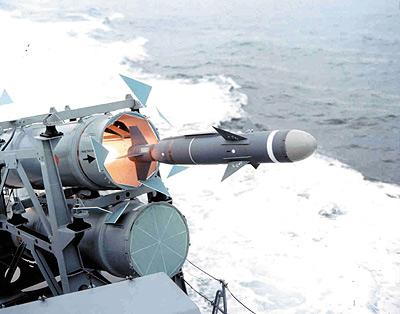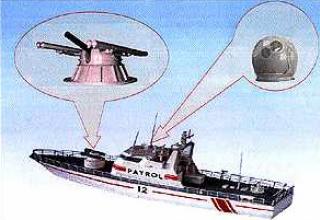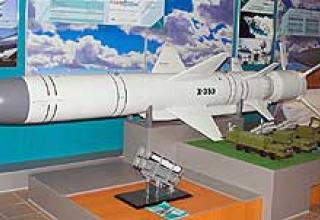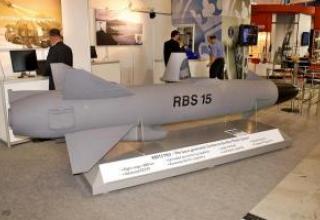Taking into account the experience of combat application of the Sea Skua anti-ship missile in the South Atlantic and the Middle East, British Aerospace carried out works on creation of a new small-size anti-ship complex for arming combat boats on the basis of this missile. The program for its creation was designated SLSS (Ship Launched Sea Skua).
The SLSS is designed to destroy small targets, but can also be used against large surface ships. For this purpose, the possibility of multiple firing with vertical or horizontal missile breeding.
Initially, the SLSS was tested on shore and then on the Verifier prototype rocket boat.
Composition:
The SLSS complex includes: Sea Skua anti-ship missile, Sea Spray Mk3 search radar and missile firing control equipment. Its total weight is about 850 kg, which allows to install the complex on ships of small displacement.
The ship version of the missile is not much different from the aircraft version. Structurally PCR is made by the aerodynamic scheme with a swivel wing, has a cylindrical body and stabilizer. The missile body has a combat unit with an ordinary BB charge, inertial control system, altimeter, steering wheel drives, battery, marching engine, booster. The PKR is equipped with a semi-active radar guidance system. In contrast to the aircraft version of the missile body SLSS is extended by 30cm to provide acceleration on the guide container.
To place the SLSS on boats, a special container-type launcher (PCR) has been developed. It is installed on deck and fixed to it with an elevation angle of 20°. In order to protect the missile from being flooded with water and to maintain the necessary storage conditions, the container is covered with a lid made of radio transparent material, which is mechanically destroyed during the launch of the missile. The launcher can be equipped with several containers.
Target search, target designation issuance and target illumination are carried out by the radar "Sea Spray" (review sector when searching from +90° to -90°, accompanied by +30° to -30°). Its control panel is combined with a missile control panel, which provides service to the entire weapon system by one operator.
After detection and classification of the target, the ship moves closer to the target at a firing range and lies down on the combat course. The radar is switched to pulse mode. Simultaneously, the PCR is prepared for firing, which includes checking, presetting the flight altitude value at the end of the trajectory (there are four fixed altitude values), as well as setting the homing head to the signal reflected from the target. When the position is taken, when the bearing on the target coincides with the firing plane, the missile is launched. When leaving the launcher, the PKR makes a "slide" up to 150m high, then after burning out the accelerator fuel it drops to the height of a marching flight.
The rocket is controlled by an autopilot and a radio altimeter at the start and march sections of the flight path. In the homing area, the control is automatically switched from the autopilot to the homing head. The PCR is reduced to the altitude set before the start and is aimed at the target. Homing head has a mode of operation in the conditions of interference, to which it switches automatically when the enemy uses the means of REB.
Sea Skua" is equipped with a penetration-type combat unit with a time delay fuse, which provides penetration of the missile into the internal volumes of the target, where it explodes, causing severe damage.
Characteristics:
| Range maximum, km | 15 |
| Flight Speed, M | 0.95 |
| Flight height on the march section of the trajectory, m | 15-100 |
| Flight height at the end of the trajectory, m. | 3-9 |
| Missile launch weight,kg | 145 |
| Length, mm | 3150 |
| Body diameter, mm | 250 |
| Weight of combat unit, kg | 35 |
| Battle unit weight ,кг | 20 |
Testing:

"SLAM-ER performed its first flight on 18 March 1997, with 13 mixed criteria successfully investigated.
In March 1995, the U.S. Navy signed a $99.4 million contract with Boeing for the engineering and production development of the SLAM-ER program. Under this contract Boeing undertakes to supply 157 SLAM-ER, with further production until 2004. Approximately 600 SLAM-ER missiles are to be delivered with further development and upgrading.
Sources:
- Ю.Макаров "ПКР "Си Скьюа": корабельный вариант" , Морской сборник N4, 1992 год












